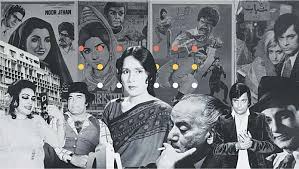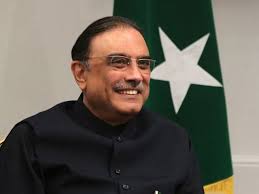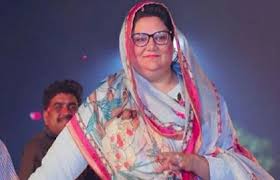SPOTLIGHT: Pakistan’s cinematic erasure

Because without them, we lose more than just works of art. In doing so, we lose our memory. Our audiovisual heritage is a reminder of life before. For a country such as Pakistan, which is already battling cultural erasure in many forms, losing our cinematic past is an understated tragedy.
Since 1948, estimates suggest that over 14,000 films have been made in the Urdu language alone. This figure doesn’t even account for the country’s vibrant regional film industries, which have contributed thousands more in Punjabi, Pashto, Sindhi and Balochi.
While there is a lack of precise figures due to the lack of a centralised national film archive, it is widely acknowledged that a significant portion of Pakistan’s cinematic heritage has been lost and forgotten. Audio-visual heritage is often considered a memory profession and the institutions that house such documents as memory institutions. Unfortunately, what others preserve as memory, we abandon as debris.
The slow erasure of Pakistan’s cinematic memory is not merely a cultural oversight. It is a refusal to come to terms with who we have been and what we might become…

“Film preservation is and always will be urgent. For every neglected film print or set of film elements that is not being stored under optimal conditions, that has not been checked or cleaned or scanned, the clock is ticking. And even if a title has been transferred to digital media, the clock is still ticking. It is ticking, just as it is for every painting and every manuscript in every museum or archive.” — Martin Scorsese
Film is susceptible to decay. Over the years, nitrate, acetate and polyester (relatively more stable) films are all chemically unstable and highly sensitive to environmental conditions. Without deliberate archival care, film just doesn’t age, it vanishes.
Scholars from Indiana University and Harvard University assessed Pakistan’s audiovisual preservation needs, and identified several gaps in infrastructure and expertise. It almost feels like there is a willful neglect, as air-conditioning for the PTV archives was turned down around the 1980s to inadequate levels. The undesired environmental conditions led to further heritage loss.
In 2020, the Pakistan National Council of Arts (PNCA) launched the National Film Archives after the dissolution of National Film Development Corporation (Nafdec) to take on the responsibility of conserving the country’s cinematic canon. It requested archival material from members of Pakistan’s film industry as well as the general public. As of 2025, there have been no significant updates or progress made.
Two of Pakistan’s most significant films, Jago Hua Savera (1959) and The Blood of Hussain (1980) were not restored through national initiatives but by foreign institutions. The British Film Institute (BFI) restored The Blood of Hussain, Jamil Dehlavi’s film banned in Pakistan shortly after its release for its overt political critique, thereby preserving a crucial artefact of political resistance that Pakistan itself refused to acknowledge.
Similarly, Jago Hua Savera, which was penned by Faiz Ahmad Faiz and considered Pakistan’s earliest neo-realist masterpiece, was restored by the son of its producer, Nauman Taseer.
Anjum Taseer traced out reels of the A.J. Kardar-directed film in France, London and Karachi. He initially planned on getting the film restored at a Chennai-based laboratory but, due to the bureaucratic delays in India, it was conserved and restored at Deluxe Restoration in London. The film was showcased as part of the ‘Restored Classics’ curation at the 2016 edition of the prestigious Cannes Film Festival, along with other cinematic masterpieces such as Andrei Tarkovsky’s Sacrifice (1986), Régis Wargnier’s Indochine (1992) and Youssef Chahine’s Adieu Bonaparte (1985).
Comparably, at the George Eastman Museum in 2016, a donation arrived from the British Film Institute, which consisted of a large collection of films made in Pakistan. Produced between 1950-83, with a majority of films from the ’60s and the ’70s, these films include Daaman (Qadeer Ghori, 1963) featuring some of the most popular songs of that year; Saiqa (Laiq Akhtar, 1968) based on the novel by the female author Razia Butt, and the Nigar Award-winning Dosti (Sharif Nayyar, 1971).
In 2020, the Institute of Museum and Library Services (IMLS) awarded a grant to the George Eastman Museum for the ‘Cinema Refugees: Films from India and Pakistan’ project. This initiative focused on the urgent preservation needs of the South Asian cinema collection by rehousing, cleaning and cataloguing audio visual documents which aimed at accessing and understanding South Asian cinema’s cultural heritage worldwide.
Then came a second grant from the IMLS in 2023 for the ‘Lost and Found: Classic Pakistani Cinema’ project which focused specifically on Pakistani films, and was built upon the successful conservation efforts of the previous grant. The project aimed to provide comprehensive care and management for 135 film prints, to digitise unidentified film fragments for public access, and catalogue all data that can be accessed by the public at large.
The fact that the task of remembering Pakistan’s cinematic past has fallen to foreign institutions and individual efforts only underscores the state’s indifference; our national memory survives not by design but by accident, exile and the care of others.
A name familiar to Pakistani cinephiles is that of Guddu Film Archive, an independent archivist who searched through various markets across Karachi, particularly the iconic and now unfunctional Rainbow Centre, in pursuit of remnants of the country’s cinematic past.
Over the years, Zahid aka Guddu Khan has allegedly assembled a personal collection of more than 15,000 memory documents, including Lollywood film posters, lobby cards, photographs, magazines, books, postcards, audio cassettes and CDs, spanning from 1948 to the 1990s. In the absence of institutional support, the Guddu Film Archive represents a vital individual intervention in the preservation of Pakistan’s audiovisual heritage.
The slow erasure of Pakistan’s cinematic memory is not merely a cultural oversight, it is a refusal to come to terms with who we have been and what we might become. While individuals and foreign institutions have stepped in to salvage our cinematic canon, a coordinated, national effort is required more than ever.
Every reel that turns into dust goes on to turn into a historical blind-spot, due to which our nation struggles to see itself clearly. The immediacy and immersion offered by audiovisual materials make them indispensable in the teaching of history.
The question, then, is no longer whether these films are worth saving but whether we are willing to remember ourselves at all.





